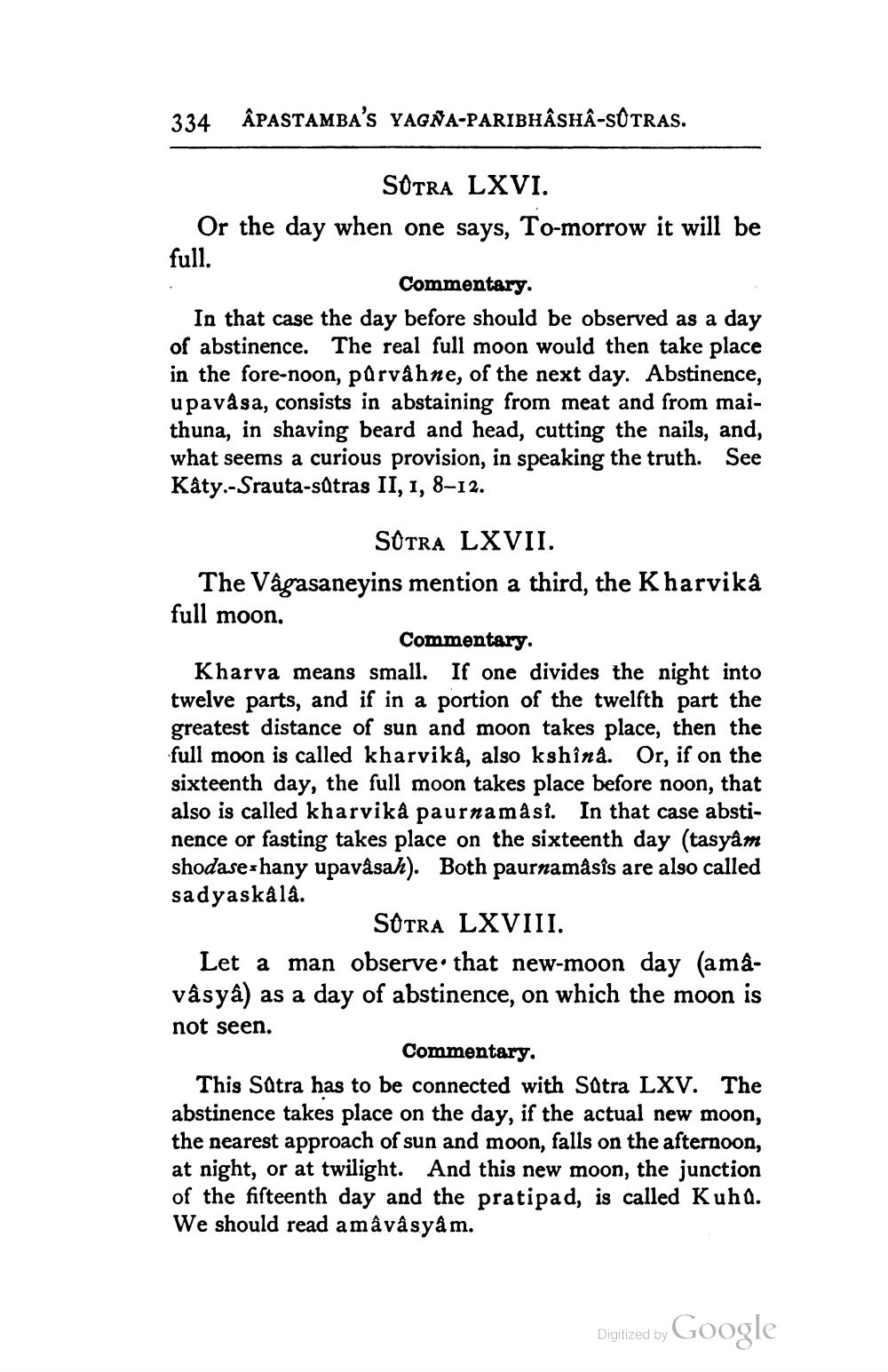________________
334
ÅPASTAMBA'S YAGÑA-PARIBHÂSHA-SOTRAS.
SOTRA LXVI. Or the day when one says, To-morrow it will be full.
Commentary. In that case the day before should be observed as a day of abstinence. The real full moon would then take place in the fore-noon, parvâ hne, of the next day. Abstinence, upavåsa, consists in abstaining from meat and from maithuna, in shaving beard and head, cutting the nails, and, what seems a curious provision, in speaking the truth. See Katy.-Srauta-sâtras II, 1, 8–12.
SOTRA LXVII. The Vagasaneyins mention a third, the Kharvika full moon.
Commentary. Kharva means small. If one divides the night into twelve parts, and if in a portion of the twelfth part the greatest distance of sun and moon takes place, then the full moon is called kharvika, also kshîna. Or, if on the sixteenth day, the full moon takes place before noon, that also is called kharvikå paurnamasi. In that case abstinence or fasting takes place on the sixteenth day (tasyâm shodaseshany upavasah). Both paurnamâsîs are also called sadyaskålå.
Sotra LXVIII. Let a man observe that new-moon day (amâ. vâsya) as a day of abstinence, on which the moon is not seen.
Commentary. This Satra has to be connected with Satra LXV. The abstinence takes place on the day, if the actual new moon, the nearest approach of sun and moon, falls on the afternoon, at night, or at twilight. And this new moon, the junction of the fifteenth day and the pratipad, is called Kuha. We should read a mâvâsyam.
Digitized by Google




